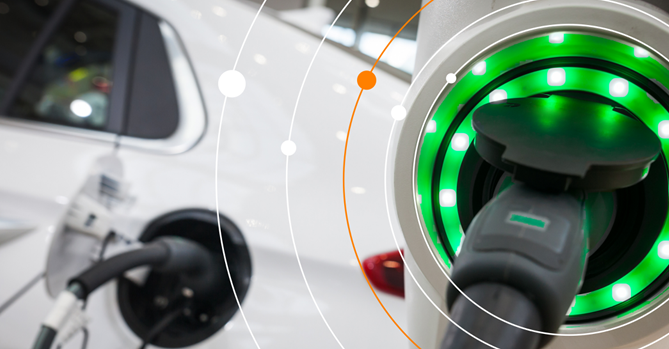In ten years, you will not own a car…..Peter Diamandis
The era of the internal combustion engine (ICE) car is ending. We may have reached “peak ICE” production this past year.
From here on out, it’s all about electric vehicles and autonomous ride-sharing, and the implications for society and the automotive industry are HUGE.
Don’t believe me? Oil demand is predicted to peak as early as 2021, according to Bloomberg New Energy Finance, and some experts suggest it may have already peaked.
Currently, electric vehicles displace the need for 350,000 barrels of oil each day. And long term, EVs are projected to disrupt demand of over 58,000,000 barrels of oil per day — a figure steadily on the rise as EV costs plummet.
Speeding to first place in today’s transit race, EVs are set to win by sheer economic advantage, fast becoming the foundation for autonomous ride-sharing fleets of the future. As that happens, it will soon become un-economical and societally unacceptable for you to hold on to that old gas-guzzling car.
Let’s dive in…
Electric Vehicles’ Competitive Advantage
This year, EVs are expected to surpass a 2.73 percent market share in the U.S. and have already reached a 5.4 percent market share in China. While this might seem negligible, growth is accelerating at an unprecedented rate, as U.S. EV market share is projected to double every two years into 2025 and well beyond.
As explained by energy expert Ramez Naam, “Their growth rate is phenomenal. It took 20 years to sell the first million electric cars. It took 18 months to sell the next million. It took 4 months to sell the fifth million. That is the pace of this change. This is growing twice as fast as solar.”
Stumping forecasters again and again, this surge is driven by pure economic advantage. While personal vehicles currently cost $0.80 per mile, autonomous electric vehicles are expected to vastly undercut this threshold at only $0.35 per mile.
And even though EVs have historically been more expensive than ICE-powered cars, EVs are far cheaper to operate and maintain. The yearly cost to operate an EV in the U.S. stands at about $485, lower than half the $1,117 cost to operate a gas-powered vehicle.
As battery prices continue to plummet, the upfront costs of EVs will decline accordingly until an EV purchase is so obvious that no long-term payoff calculation is even needed. Going electric will be a foregone conclusion.
But beyond plunging costs, investment is booming, and auto manufacturers are locked in an EV race with contenders worldwide.
Volkswagen is set to spend $50 billion on EVs over the next five years. Nissan is charging ahead with a vision to integrate its EVs into a broader consumer ecosystem through the company’s Intelligent Mobility strategy. And GM has pledged to go all-electric in the near future as it strives to release 20 new electric models in the next 4 years.
Beyond passenger transportation, EVs are even disrupting large-scale shipping operations.
Last year, UPS ordered 950 N-GEN electric Workhorse Group vans, which can travel up to 100 miles on a single charge. At a cost of just $6 per 100 miles traveled, this trucking alternative promises astounding economic savings. While UPS currently operates 300 electric and 700 hybrid-electric vehicles, it aims to have 25 percent of its vehicles operating on alternative fuel by 2020.
The company’s recent pre-order of 125 Tesla electric semi-trucks demonstrates yet another step towards this ambitious goal. The Tesla Semi — today 20 percent cheaper on a per mile basis than gasoline-powered trucks — is just one of many vanguards showcasing the extraordinary scale of electric takeover, from compact cars to large-scale transit.
Over the coming decade, sheer market forces will catalyse consumer adoption of EVs, likely in the form of autonomous fleets, at an astounding rate.
Electric Autonomous Fleets
While personal EVs continue to proliferate, the aggregate mileage of EVs will rise exponentially faster as autonomous electric ride-sharing fleets gradually become commonplace.
McKinsey predicts that one in ten cars sold could be a shared vehicle by 2030. Numerous leading car-share operators already employ EVs, such as Daimler’s Car2Go and BMW’s DriveNow programs. Meanwhile, most autonomous vehicle developers have also included electric vehicle models in various testing phases.
As found by a University of Texas study, if autonomous taxis stood at a cost of $0.75 per mile, over 39 percent of miles would be covered by these services. And at half that price ($0.375 per mile), autonomous taxis would cover 75 percent of miles, based on pure economic calculi.
Just as is the case with autonomous vehicles, “the way that most people will first encounter an electric vehicle (won’t be a result of) buying one for themselves. These vehicles are (going to be) rapidly deployed mostly as electric taxis,” explains Ramez Naam.
And big players are fast jumping on the bandwagon. For one, Apple recently hired Tesla’s VP of Engineering, Michael Schwekutsch, who now leads the industry in electric powertrain development. A bold move, this likely indicates Apple’s intentions to wholly integrate EVs into the tech giant’s somewhat secret autonomous vehicle fleet.
Just last year, Apple’s cars drove in autonomous mode for 80,000 miles, while drivers took back control of the vehicle only every 1.1 miles driven, on average. Increasingly competitive, this driver intervention rate now stands nearly neck and neck with Mercedes-Benz’s human intervention rate of 1.5 miles, and Toyota’s somewhat higher reported average of 2.5 miles.
Yet another competitor, GM Cruise covered 450,000 miles in the U.S. last year with its cutting-edge fleet of third-generation all-electric Chevrolet Bolt vehicles. The company currently operates Cruise Anywhere, an employee-only ride-hailing service in San Francisco, and has even partnered with DoorDash to leverage its vehicles for food delivery in the future.
One of the more salient figures in today’s EV surge, Tesla’s Elon Musk recently announced the company’s aspiration to release a fully autonomous robo taxi fleet next year.
And one of the earliest players, Alphabet subsidiary Waymo rises far above its competitors in terms of miles driven and low human intervention rates. Waymo’s 600 vehicles on the road have driven over 10 million miles in the U.S, not to mention Waymo’s additional 8 million simulated miles driven each day. And as of current rates, Waymo vehicles require manual intervention only once every 11,000 miles, vastly surpassing the competition.
Since its launch in December 2018, the Waymo One service has transported over 1,000 pre-vetted riders in the Phoenix area. Earlier this year, Waymo additionally announced a strategic partnership with Jaguar Land Rover to release the I-Pace, a fully electric autonomous SUV. In a massive joint effort, the companies aim to release 20,000 vehicles by 2020.
Final Thoughts
As electric vehicles improve in performance and witness a drop in overall operating costs, forward-thinking individuals, companies, and investors are rapidly transitioning to all-electric transport.
Battery technologies underpinning tomorrow’s EVs are witnessing explosions in efficiency, decimating prices and minimising the environmental costs of contemporary transit.
As 5G and next-generation cellular networks catalyse the growth of driverless EV fleets, partnerships between EV manufacturers, autonomous driving companies, and ride-sharing services will grow increasingly vital.
Plummeting prices and increased convenience will soon tip the favour towards electric car-as-a-service options, and private ownership of internal combustion engine cars will become a thing of the past.






